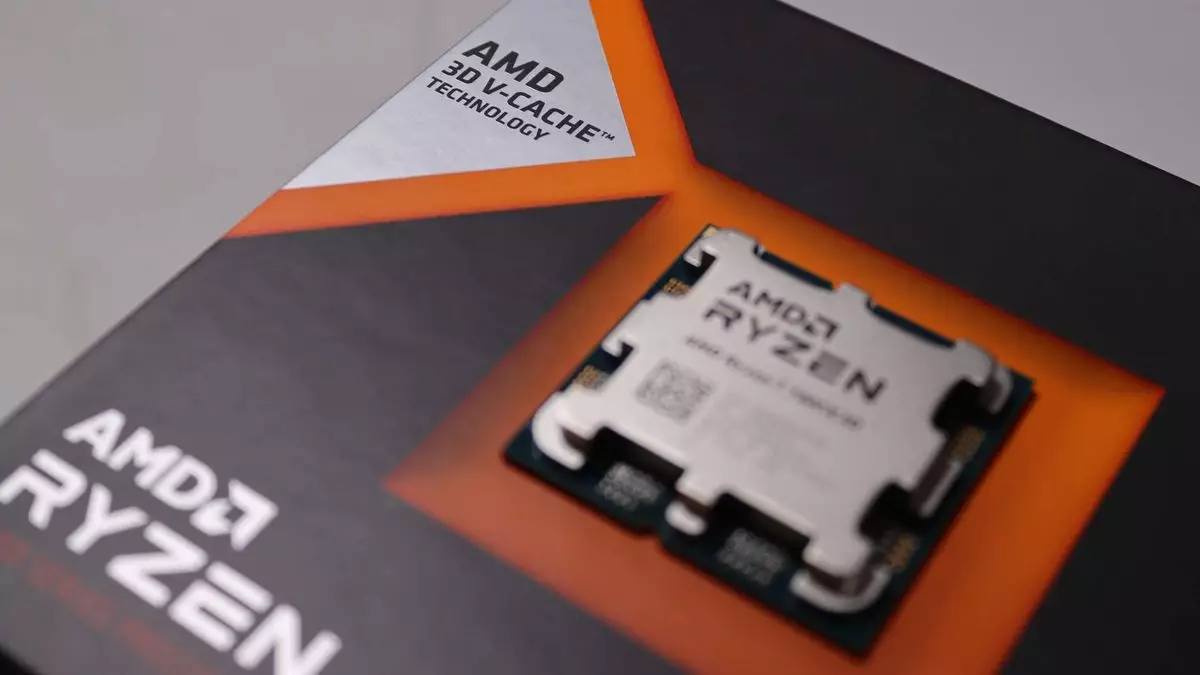AMD has recently made headlines with the launch of its Ryzen 7 9800X3D processor, showcasing a significant upgrade in technology and performance. Priced at $479, this new chip arrives with notable advancements, particularly in cache architecture and clock speeds, distinguishing it from its predecessor, the Ryzen 7 7800X3D. This article delves into the key features and anticipated impact of the 9800X3D on the advanced computing landscape.
One of the focal points of the 9800X3D is the innovative placement of its 3D V-Cache, which has now been relocated beneath the processor, as opposed to the previous generation that placed it on top. This alteration is not merely a design tweak; it represents a groundbreaking change in how cache memory interacts with the processor. Given that cache plays a vital role in gaming and intensive applications, this strategic repositioning is expected to enhance thermal management significantly, therefore facilitating better performance.
The same 64 MB of 3D-stacked cache remains; however, the under-situated cache allows the chip to dissipate heat more efficiently. With the previous iteration, overclocking was a laborious process due to complications with cooling. The re-engineered cache placement promises to alleviate some of these issues, positioning the 9800X3D as a more feasible option for enthusiasts looking to push their systems further.
Performance Metrics and Enhancements
Performance improvements are also evident in the clock speeds. With a base clock that is now 500 MHz higher and a boost clock that is 200 MHz above that of the 7800X3D, the 9800X3D sets high expectations for users demanding top-tier performance. These enhancements are not just numerical; they indicate a leap in processing power that could greatly influence tasks ranging from gaming to content creation.
It is important to note that core counts and the thermal design power (TDP) remain consistent with the earlier model. This stability suggests that while AMD is focusing on boosting specific performance metrics, it is also prioritizing system stability and cooling efficiency simultaneously.
With a launch price $30 higher than its predecessor, the 9800X3D aims to carve out a significant space in the competitive CPU market. Previous generation chips, notably the 7800X3D, have set a precedent for high performance at a reasonable price. However, the success of the 9800X3D will heavily depend on its real-world performance, especially in light of rival offerings like Intel’s Arrow Lake series.
AMD must demonstrate that the technological advancements in the 9800X3D provide sufficient justification for its price point. The shift to a new Zen 5 architecture and the potential for successful overclocking could give AMD an edge, but consumer perception and performance benchmarks will ultimately dictate the chip’s market success.
The Ryzen 7 9800X3D heralds a promising chapter for AMD, combining cutting-edge technology with strategic design improvements. As anticipation builds around its capabilities, the 9800X3D could prove to be a game changer for gamers and professionals alike. Only through rigorous testing and practical application will we understand the full potential of this new processor. As consumers await further evaluations, the 9800X3D sets a high bar for performance in the coming years.

